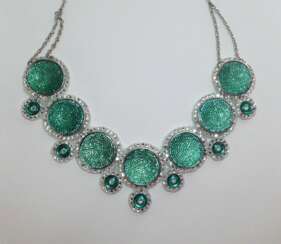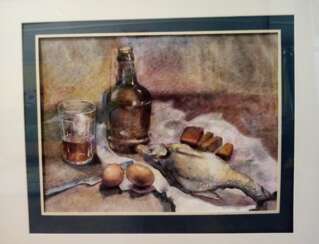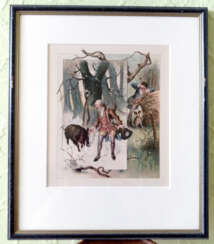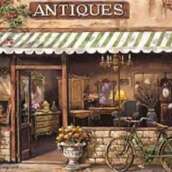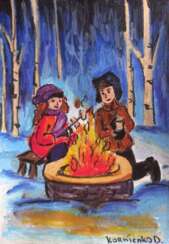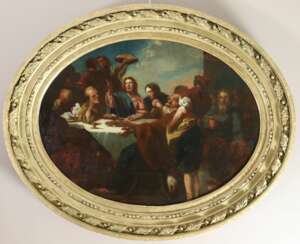8 Items by auctions and galleries:
art moderne et contemporain
Choke rNecklace
Elena Zimovets (b. 1956) 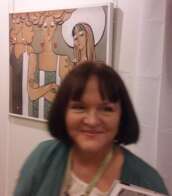 Shop Zimovets Elena
Shop Zimovets Elena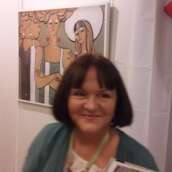

Elena Zimovets
08.05.1956
France
Professional certified fashion designer, painter, illustrator and graphic designer.
Graduated from the Moscow Textile University named after Kosygin, Faculty of Applied Arts (since 1982).
From 1982 to 1993 she worked at the House of Models as the chief designer and designer: she created collections of ready-to-wear and Haute Couture clothes.
From 1999 to 2002 - Lecturer at the International Private Academy of Audiovisual Arts in disciplines: painting, drawing, composition, modeling and costume history and color graphics.
In 2008 in Portugal (Portimao) a personal exhibition "In harmony with the soul" was successfully held,
The exhibition was widely covered by television, radio and the press.
Member of the GemlucArt Monaco community.
Recent exhibitions:
2016 - Suquet des arts, Cannes, France
2016 - GemlucArt, Monte Carlo Contemporary Art Fair, Monaco
2017 - GemlucArt, Monte Carlo Contemporary Art Fair, Monaco
2018 - "Russian Seasons Club" - Exhibition in Gray d'Albion, Cannes.
2019-2020 - Personal exhibition in Grasse. Paintings are in private collections.
About creativity:
“I have developed my own painting technique on transparent fabrics such as organza. This is not batik, but color graphics and painting on fabric. I also work in other techniques and with different materials: pastel, acrylic, oil, watercolor, etc.
Recently, I have been researching movement and pulsation: forms, lines and points in abstract painting and in space, as well as their architectonics. I developed my own technique and style, working with line and point, namely with drops of paint, which I then stretch into lines of different thicknesses. This is my conceptual idea for my abstract painting. Its origin lies in my works in the style of Khokhloma and Zhostovo, on which I worked in the 70s of the 20th century.

Artist shop
Zimovets Elena
France
Number of products: 12
Под рыбку...
MARINA Havova (b. 1978)  Shop Havova MARINA
Shop Havova MARINA

MARINA Havova
11.07.1978
Russia
Я не могу жить без живописи. Я владею разными техниками, но моя пламенная любовь-акварель, живая волшебная краска.
В акварели я стараюсь достичь живой эмоции. Моя цель: достичь слияния с краской, чтобы акварель свободно разливалась по бумаге, создавая желаемые мне образы.
Получая истинное удовольствие от написания каждой картины, надеюсь, что передаю через картину свою любовь!
Стоимость доставки не включена и рассчитывается отдельно для каждого региона доставки. Доставку оплачивает покупатель.

Artist shop
Havova MARINA
Russia
Number of products: 188
Тюльпан
MARINA Havova (b. 1978)  Shop Havova MARINA
Shop Havova MARINA

MARINA Havova
11.07.1978
Russia
Я не могу жить без живописи. Я владею разными техниками, но моя пламенная любовь-акварель, живая волшебная краска.
В акварели я стараюсь достичь живой эмоции. Моя цель: достичь слияния с краской, чтобы акварель свободно разливалась по бумаге, создавая желаемые мне образы.
Получая истинное удовольствие от написания каждой картины, надеюсь, что передаю через картину свою любовь!
Стоимость доставки не включена и рассчитывается отдельно для каждого региона доставки. Доставку оплачивает покупатель.

Artist shop
Havova MARINA
Russia
Number of products: 188
Галстук серый в стиле модерн
Margarita Bortnikova (b. 1962)  Shop Bortnikova Margarita
Shop Bortnikova Margarita

Margarita Bortnikova
28.12.1962
Russia
Автор «Галереи Кружева», город Самара. Мастер народных промыслов и Мастер декоративно-прикладного искусства Самарской Губернии. Лауреат ВВЦ конкурса «Лучшая продукция». Золотая медаль Росстандарта. Медаль I степени «Золотой Сирин», ВВЦ Москва. Гран-при международного конкурса — Финляндия. Участник «Estet Fashion Week» г. Москва, “Harbin Fashion Week”, Китай, «Roma Fashion Week”г.Рим, Участник международной выставки «EXPO 2017”г.Астана,фестивалей «Дни Российской моды в Европе» г. Брюссель, г. Люксембург, г. Берлин, г. Гамбург и др.
Работает в эксклюзивной авторской технике вязаного кружева ручной работы, сочетающей классическое кружево, и тенденции современной моды. Каждая модель одежды подчеркивает неповторимый, индивидуальный и завершенный образ. Эти образы, созданные дизайнером, можно сравнить с работой художника живописца. Очарование и женственность, неповторимость и полет фантазии делает работы оригинальными, уникальными, запоминающимися.
Инстаграм @margaritabortnikova
Показы:
«Жизнь большого города»
«Золотое искушение»
«Двойное притяжение»
«Цветы России»
«Средь шумного бала»
«Ветер перемен»
«Золушка»
«Мой Сон»
«Океан Неба»
«Пробуждение Весны»
Персональные выставки:
«Переплетение»
«Геометрия Кружева»

Artist shop
Bortnikova Margarita
Russia
Number of products: 68
У костра
Daria Kornienko (b. 1996)  Shop Kornienko Daria
Shop Kornienko Daria

Daria Kornienko
26.08.1996
Ukraine
Дарья. Занимаюсь творчеством больше 5 лет. Навыки рисования получала в художественной студии, много занимаюсь сама. Люблю рисовать пейзажи, животных, людей.

Artist shop
Kornienko Daria
Ukraine
Number of products: 29
